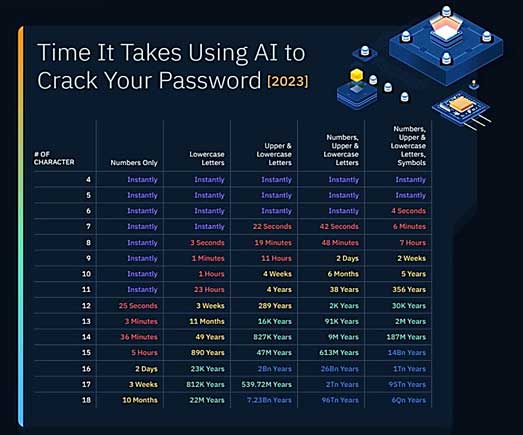When it comes to mobile device security, think Apple.
Choosing the right mobile devices and operating systems (OS) to not only meet all the needs of your business, but also the demands of all of your employees can be a challenge. This puts IT in the crosshairs of HR, executives, and employees while they focus on the need for securing and properly managing all of those devices instead of which is the most popular.
- Employees want to use Apple iOS and/or Android OS products because it’s what they’re used to.
- HR would like to satisfy employees by meeting their needs such as providing them with a BYOD option so they can use their personal devices for work.
- Executives may have a personal preference or bias and don’t want to switch to a standard OS across the organization.
Protecting you company’s customer data, accounting and financial data, your intellectual property, and other sensitive data is often IT’s most important job. It’s no wonder with cyberattacks rising across industries. In fact, almost 50% of executives expect cyberattacks targeting accounting and financial data to increase not only in number, but also in size and severity over the next year.
Organizations in both the PRIVATE and PUBLIC sectors need to pay far more attention to their cellphone and tablet security. Even if the MDM is only used to force Passcode changes with a degree of characters and symbols as AI is passing your security each day via your unprotected cellphones. Look at the AI time it takes to hack into your cellphone. This is a wake-up call to all IT Management!

That leaves IT wanting to standardize, choosing one OS, and that’s Apple. Why? There are a number of reasons Apple is the choice for technology experts, but to put it simply, iOS aligns easily with leading mobile device management (MDM) platforms, including Cisco MDM Security and Policy software. This makes it a lot easier for IT to protect external customer data and internal data on mobile devices.
Apple vs Android
So, let’s compare apples to androids. When it comes just to security, Apple’s OS has:
- An integrated design that makes security vulnerabilities less frequent and harder to find.
- Updates that are easier to control across devices, promising consistent security.
- Closed source code that makes it harder for hackers to find security flaws.
Let’s dive a little deeper into that last bullet. According to an Open Source Security and Risk Analysis report, at least one open-source vulnerability as found in 84% of code bases. Android’s open source code—which can be viewed by anyone—makes it easier for hackers to develop exploits, increasing the threat level. On top of that Android’s inconsistent update releases could mean that there are more Android bugs in circulation.
As mobility experts, the AOS Mobile Technologies team is often asked which they prefer and why. Hands down it’s Apple due to its single closed source OS, very efficient enrollment process, and unmatched policy enforcement and security. And that rests on the shoulders of Apple Business Manager (ABM), the one-stop shop for managing devices, content, and rules for Apple devices.
Apple Business Manager
The best way to minimize malware and manage your organization’s assets and policy is to use the Apple OS along with ABM. Apple Business Manager works seamlessly with most mobile device management solutions to streamline device enrollment, simplify app purchasing and content distribution, and enhance the security of your devices.
Enrollment
ABM automated device enrollment makes it easy to enroll your entire fleet of corporate-owned iPhones and iPads in your MDM is automatic—without having to touch any of your devices. IT can automatically provision devices into MDM during setup—right out of the box. You can also customize the onboarding experience to streamline the process for employees and it gives admins the ability control access based on configuration profile. When it’s time for employees to turn in their devices, device enrollment makes it easy to clear the activation lock and re-deploy the device without jumping through hoops.
Security
Apple device management enables you to remotely lock, and wipe stolen or missing devices, ensuring the safety of your data. Supervised iOS and iPad OS devices have the added capability of Lost Mode, enabling your admins to pinpoint the device’s location. ABM’s security capabilities are especially important in environments where shared devices are common, such as in healthcare and on the factory floor. Staff can use the device during their shift and then return it at the end where it will be wipes of sensitive information and made ready for the next shift.
App Purchasing and Content Control
Apple Business Manager makes it easy for you to buy content in volume with the Volume Purchase Program (VPP). With volume purchase, apps are tied to your ABM account, and it still consumes a license, but you can regain that license when the person uninstalls the app, removes the app or the device is wiped. You also have access to a purchase history list that includes the current number of licenses in use and what content is assigned to which user or device.
People, processes, and technology
Even with the best mobile device and MDM in your employee’s hands, having a partner that can provide you with and end-to-end solution that enables you to operate at the lowest possible cost, while meeting all stakeholder needs is priceless to your budget and peace of mind. That’s AOS Mobility Services.
Utilizing the right people, processes, and technology, we help you automate your mobility management workflow, so IT can work more efficiently with Cisco MDM solutions and focus on business-critical tasks, not managing your mobile fleet. Learn more at www.aosmobility.com or contact us at sales@aosmobility.com